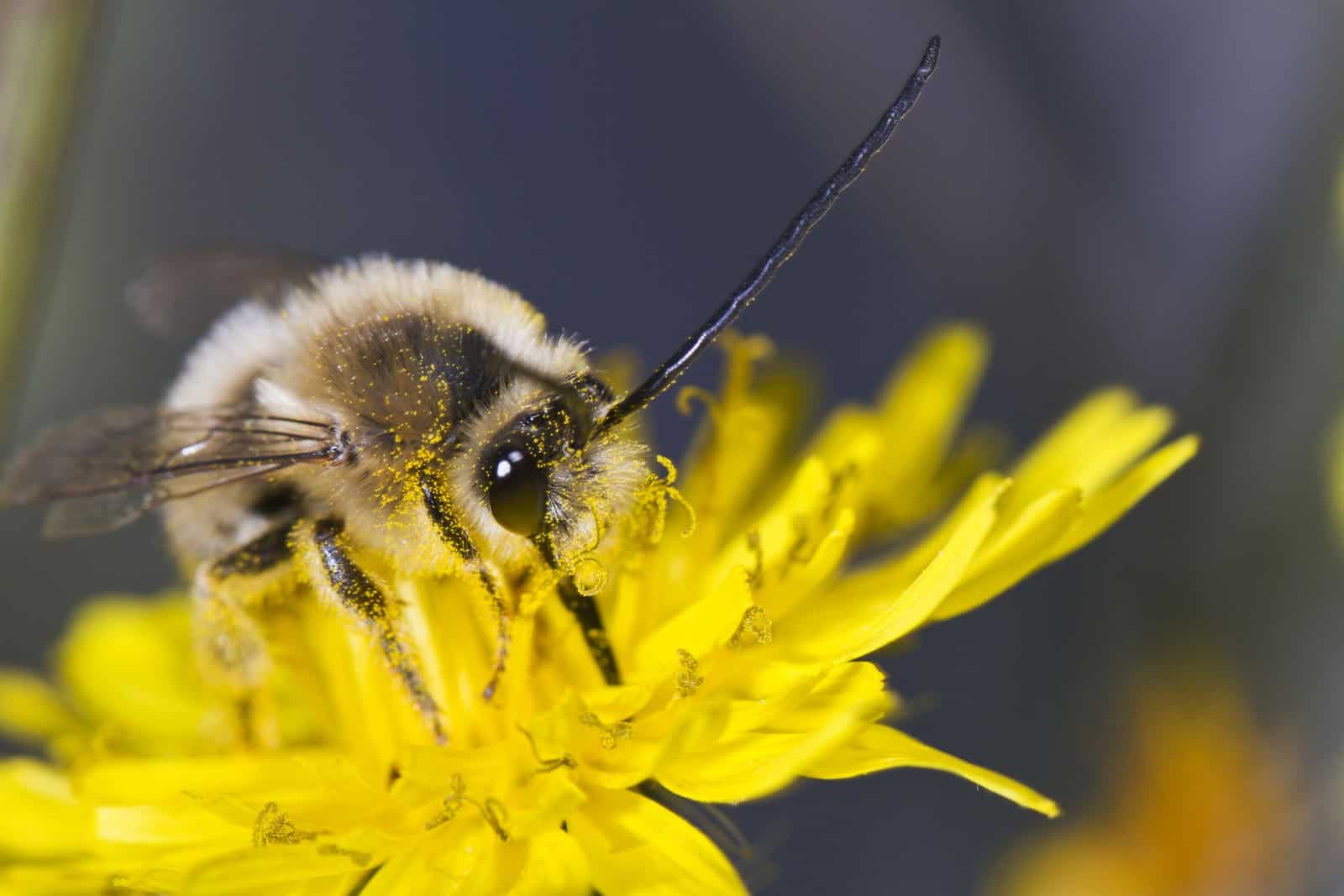When we think about bees, we often think of honey bees first! But there is a type of bee that is equally as important as the honey bee but not as well known- the Long Horned Bee! If you have ever wondered what a Long Horned Bee is, today is your lucky day. This short article should enlighten you on this very subject!
What is the long-horned bee?
Although part of the same family as honeybees, the Long horned bee has some unique qualities that stand it apart. The most obvious difference between the two types of bees is the size of their antenna! As the name may suggest, the long-horned bee has a much longer antenna than the honeybee (or most other bees for that matter), that helps it stand out. This only applies to the males, though, with the females having shorter antennae like what we are used to seeing on other bees.
Other key features of the long-horned bee include a yellow face and longer hairs on their body, which some people think gives them a cute ‘fuzzy’ look! Oh, and they have pale bands of hair when compared to most other bees, giving them a pale yellow and black look!
The female long horned bee has long hairs on her hind legs, which she uses to carry valuable pollen back to her ground based nest. This pollen is then used to make the food (otherwise known as bee bread) she will feed to her larvae (otherwise known as babies!!).
Finally, long-horned bees are classified as medium size bees when compared to their other ‘bee buddies’!
Where can you find long horned bees?
Long-Horned Bees are found in many parts of the world. They live in a variety of habitats, including forests and grasslands. Long-Horned Bees have been known to be found as far north as Alaska in North America and as south as Argentina. The most common habitat for these bees is grassland or savannahs, which contain more flowering plants for them to feed from.
Long-Horned Bee VS Honeybee
There are several key differences between the honeybee and the long-horned bee as follows;
Social Behavior
Honeybees tend to be more social creatures, bunching together to stay in a beehive or similar grouped colony. However, long-horned bees usually nest on the ground alone or in much smaller numbers.
Pollination Habits
A typical honeybee will usually gather pollen from a wide range of flowering plants, this is why they are called generalist pollinators. Whereas the Long Horned Bee will only choose specific flowers when gathering its nectar, making it a specialist pollinator.
There are different species of long-horned bee that gravitate to a different set of plants and flowers. For example, one of the species is known as the ‘squash bee’, as it only gathers pollen from the flowering squash plant. This means that long-horned bees play an important role pollinating the specific range of plants and flowers that they work with.
Nature VS Nurture
Honey bees like to cluster together and make honey, this is why they are well loved and kept by beekeepers all over the world. Long-horned bees don’t have the same habits and, as stated above, are more solitary in nature. This means that they are not actively raised by humans but instead only found naturally in the environment. Therefore, they are known as native pollinators.




